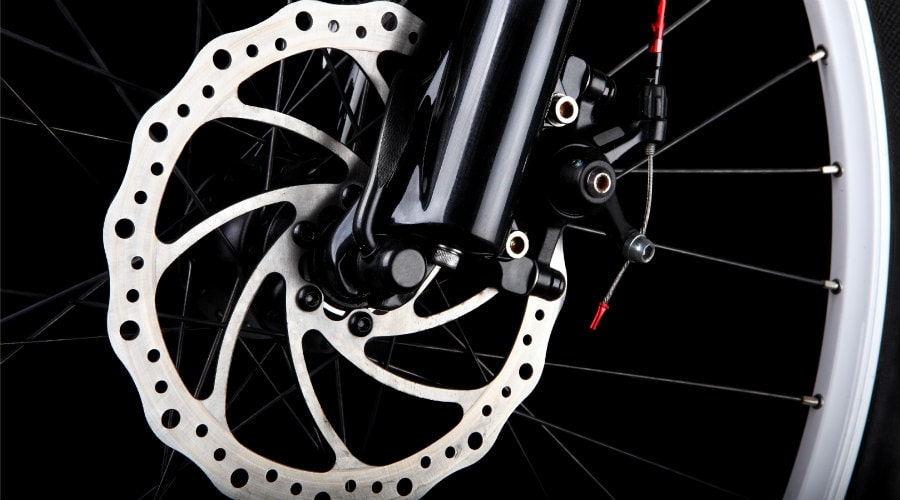Let's talk about brakes
Brakes are one of the essential components of both a conventional and electric bicycle, as they can greatly improve the experience on your electric bicycle. There are 2 main types of brakes: mechanical or hydraulic , whose main difference is the operation.

While the mechanical ones work through a “chicote” or cable, which is pulled from the lever of your brakes, the hydraulic ones work thanks to the change in pressure of the oil they contain. Below we will tell you more about them, as well as their advantages and disadvantages.
mechanical brakes
Mechanical brakes consist of a cable, a mechanical disc and a brake lever that, when pressed, join together to stop the disc. They are the most basic brakes known for their easy and quick maintenance. They have significant power when braking, as they lock the wheel easily, although it depends on the force we apply with our hands.

Advantages :
-
You can maintain them with ease.
-
Easy to find spare parts easily.
-
They are more economical.
-
Practical and easy maintenance.
Disadvantages :
-
Less control and braking power.
-
They are more easily damaged by dust or dirt.
-
They need constant maintenance.
-
They wear out brake pads more quickly.
-
They require a lot of effort to stop and can be tiring on the hands.
Did you know that at the time they were the only type of brakes in the world of electric bicycles?
Hydraulic brakes
They consist of a sealed system filled with liquid, which replaces the steel cables to prevent the cyclist from losing control when braking , they provide better performance, power, control and speed in braking thanks to their improved mechanism, they are much more efficient and Less pressure is applied to the lever when you brake as they contain a special liquid that activates them.

They are more reliable due to their sensitivity when braking and with minimal wear , since they have full control over braking and only lock if you do. On the other hand, these benefits have a higher price than mechanical brakes, due to the quality and improvement they have.
Advantages:
-
They work in any climate.
-
They are more efficient when braking.
-
They need little maintenance.
-
Greater power and stability.
-
Greater smoothness and performance.
-
System protected against damage.
-
They require no effort to brake.
Disadvantages:
-
Spare parts are expensive due to the high range.
-
Repairing them requires specialized tools, although more and more workshops have the capacity to service hydraulic brakes.
With the high powers of our engines, and our constant care for the quality and range of our components , little by little we have updated our models to use hydraulic brakes exclusively, but maintaining an impressive price range.
In addition, the brakes on Pulse electric bicycles have another unique factor, which adds quality and safety to users: the KillSwitch sensor , which guarantees that when applying the brakes any electrical current to the motor is eliminated.
Now that you know a little more about brakes, which ones do you prefer for your electric bicycle?
